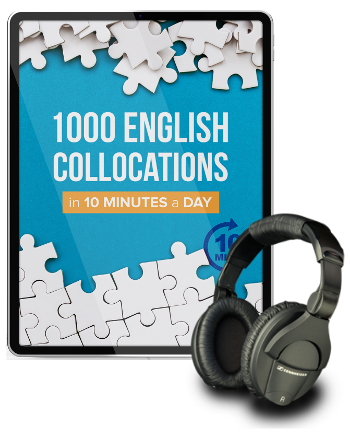
Get ready to expand your vocabulary by learning 40 collocations with the word discussion!
Collocations are words that native speakers often use together, and learning them helps you speak English more fluently and naturally.
40 collocations are a LOT, so make sure you download the free PDF of today’s lesson – you can save the lesson and review it again later.
Adjectives often used with DISCUSSION
You can have a short/brief discussion, meaning it doesn’t take much time, or a long/lengthy discussion taking a lot more time.
You can have a detailed/in-depth discussion, meaning it goes deep into the topic, or a wide-ranging discussion that covers many different topics.

You can have a casual discussion which is more relaxed and informal, or a serious discussion that’s more focused and purposeful.
Maybe you only have time for an initial/preliminary discussion – this means you begin to talk about it, but you will need further discussion (more discussion) later.
When people share their direct and honest thoughts, that can be called a candid/frank/open discussion. Discussions can sometimes be animated or lively – that means with a lot of energy and emotion. If we describe it as an intense or heated discussion, that means some of the emotion is angry.

One thing you might see at events and conferences is a panel discussion – that’s when there’s a small number of people (typically around 3-5) who answer questions and talk about topics suggested by the audience or by a moderator.

Verbs & Nouns Often Used with DISCUSSION
The main verb we use with discussion is have, we have a discussion.
You can also be involved in, participate in, or take part in a discussion – all of those mean you will be one of the people talking and listening.
In a meeting or conference, one person might lead the discussion, meaning they sort of control and guide the conversation. The leader could ask a question or present some information to open/start/kick off the discussion.

During the discussion, anyone can bring something up for discussion – meaning to introduce the topic to the group. Some topics naturally generate/provoke/spark discussion – this means they cause conversation to happen.
Let’s say someone brings up a recent news article as a basis for discussion – this means a main fact/source for the conversation. If people have opinions or thoughts on the article, then discussion breaks out or discussion ensues. This means that conversation happens as a result.
If the meeting is running short on time, the group might need to defer/postpone the discussion of some topics, meaning delay them to a later time. The leader will try to wrap up / conclude / end the discussion, meaning to help everyone finish it.

Afterwards, the leader might send an e-mail to sum up the discussion – meaning summarize, provide a short version of what was said. The e-mail could also remind people about the outcome of the discussion – meaning the result, if anything specific was decided by the group.
Later, people might exchange more messages or phone calls to follow up on the discussion, meaning to continue talking about, working on, or checking on items that were discussed that day.
Now you know 40 collocations with discussion! Make sure to download the lesson PDF, so you’ll be able to review and remember them all.










